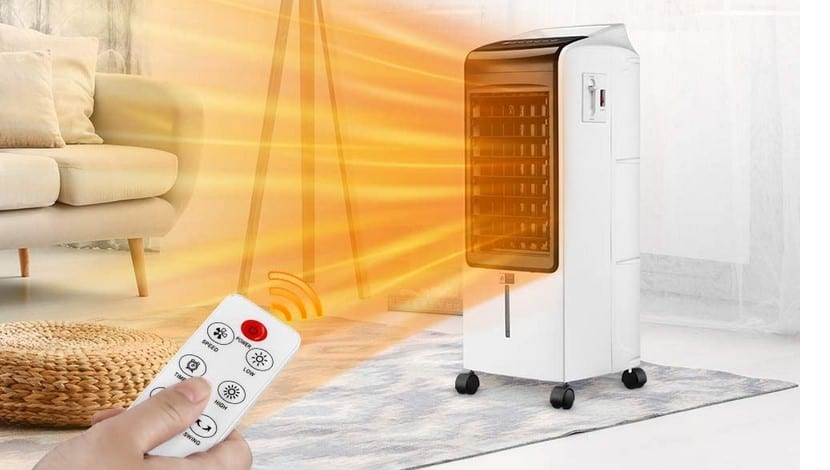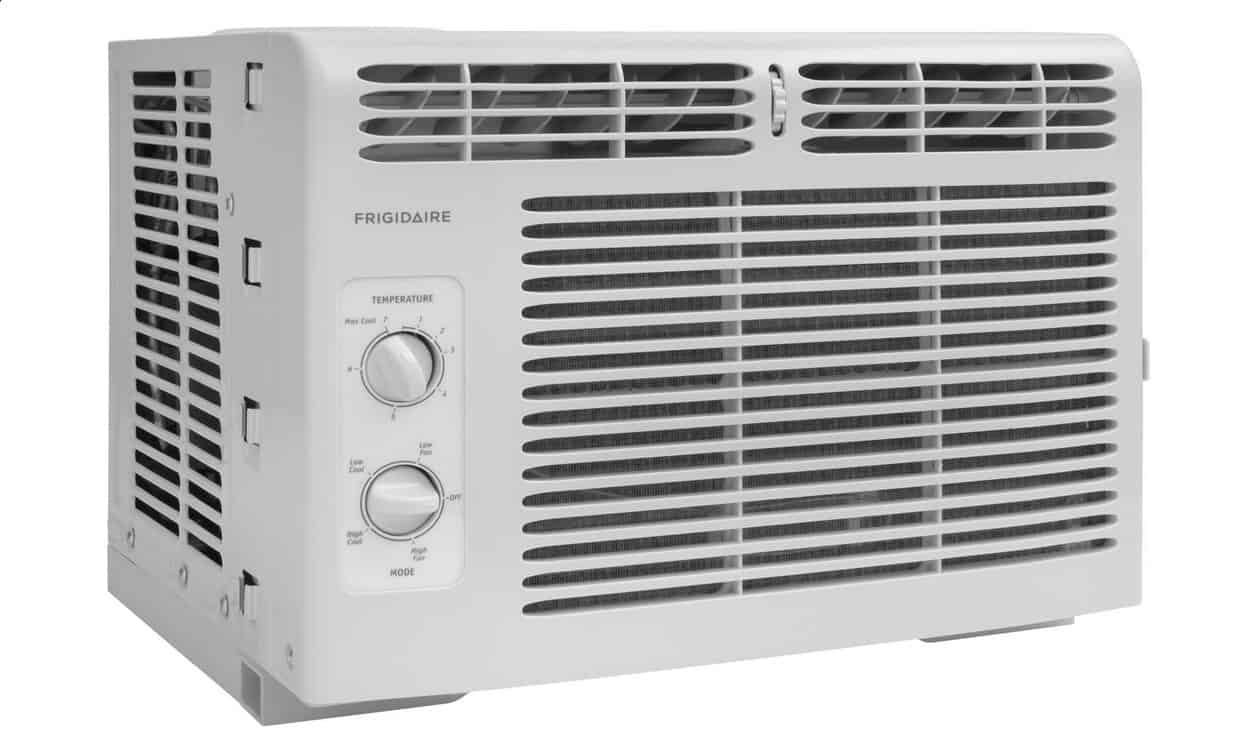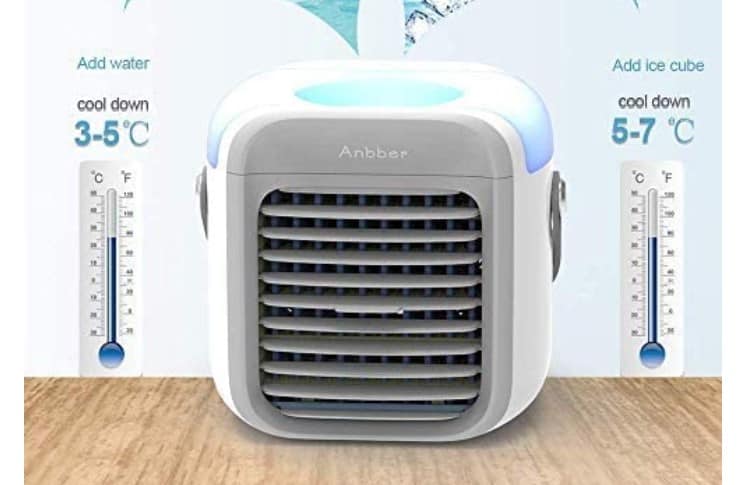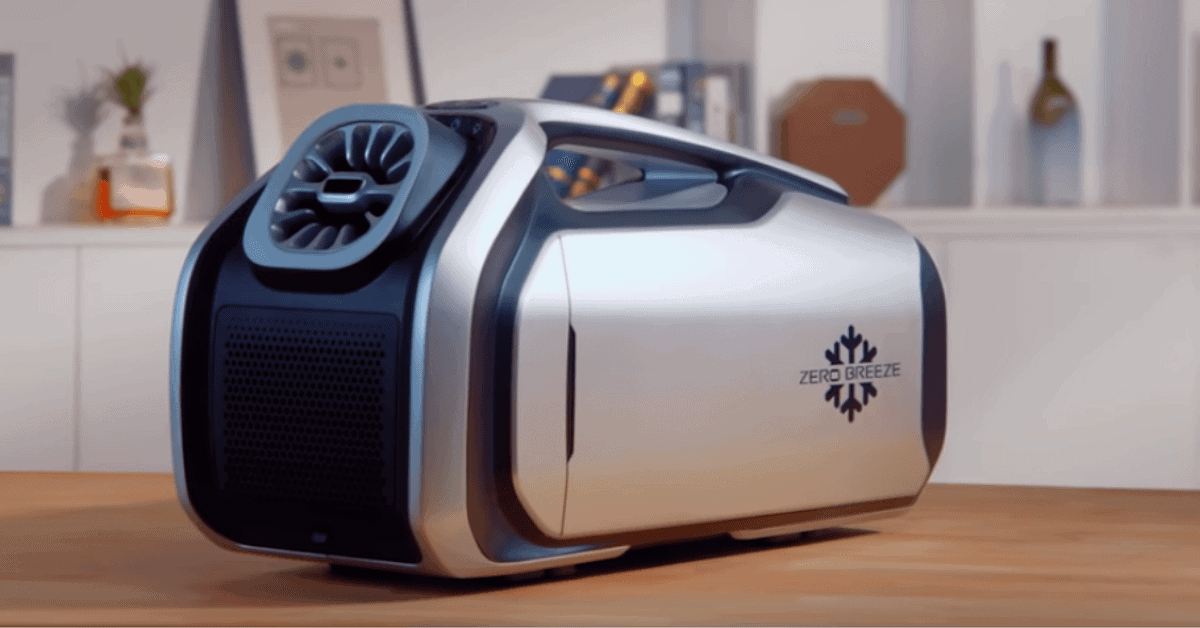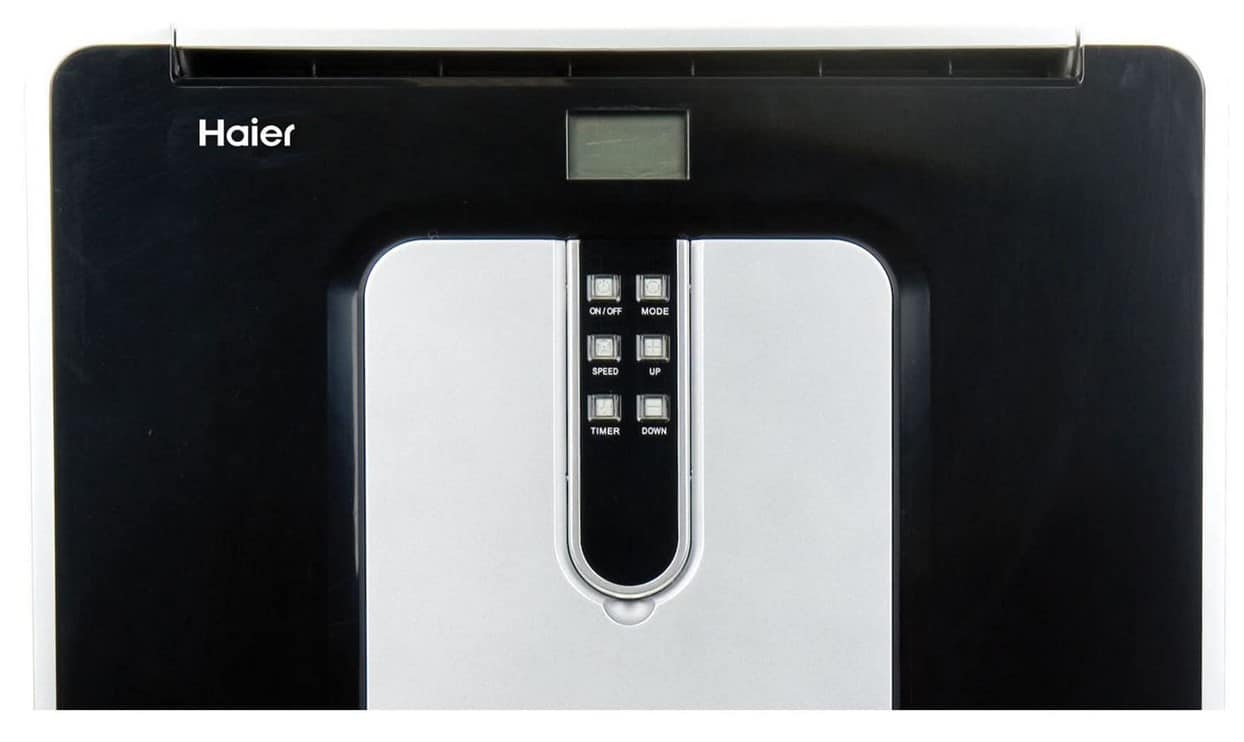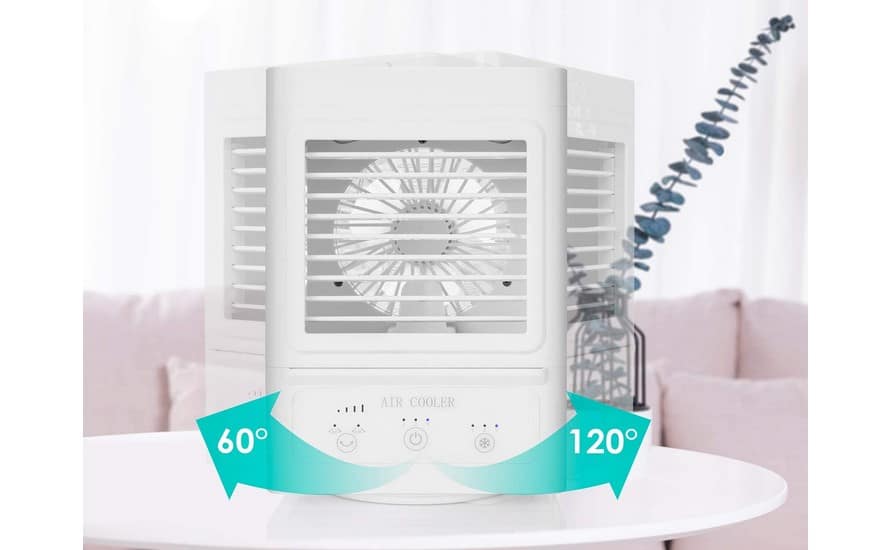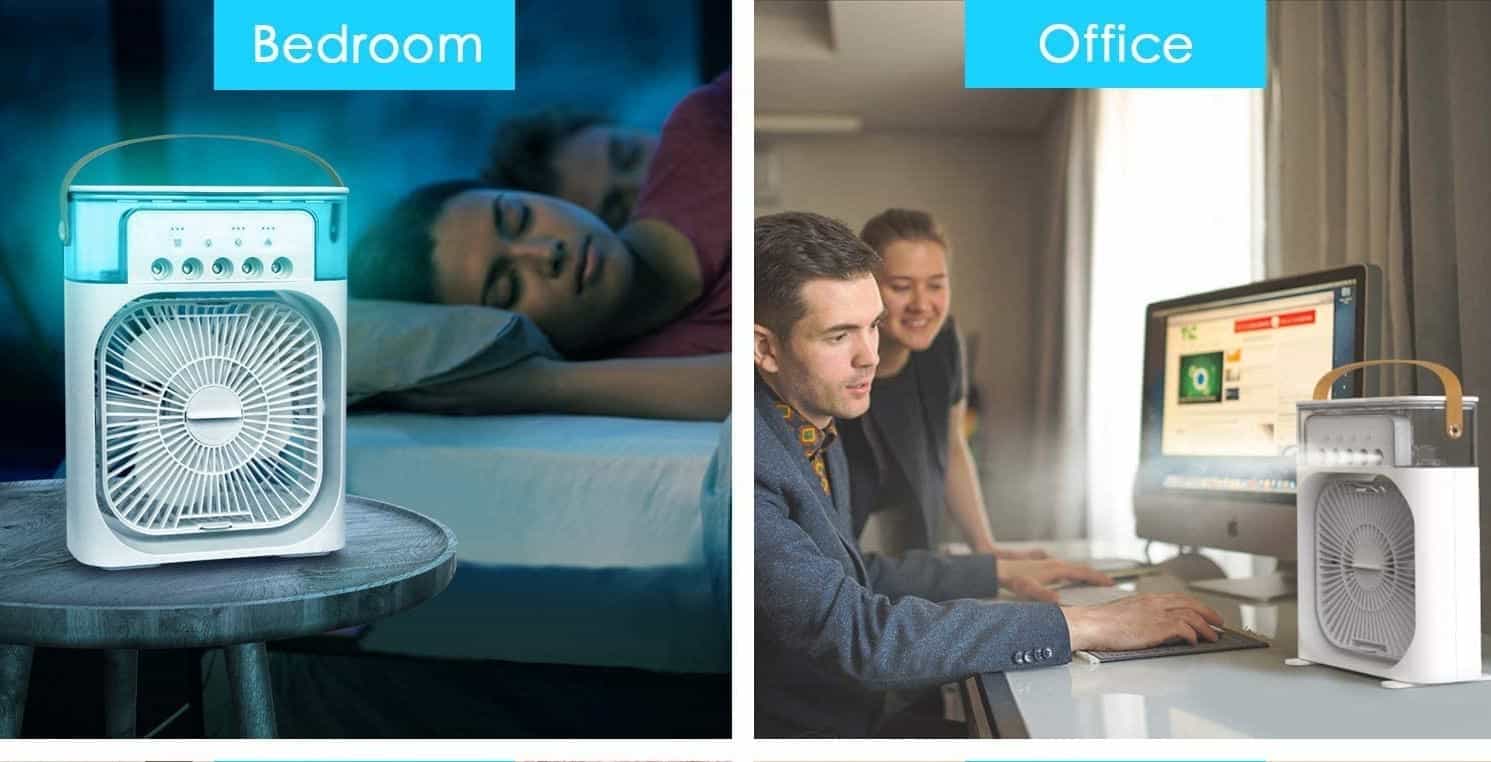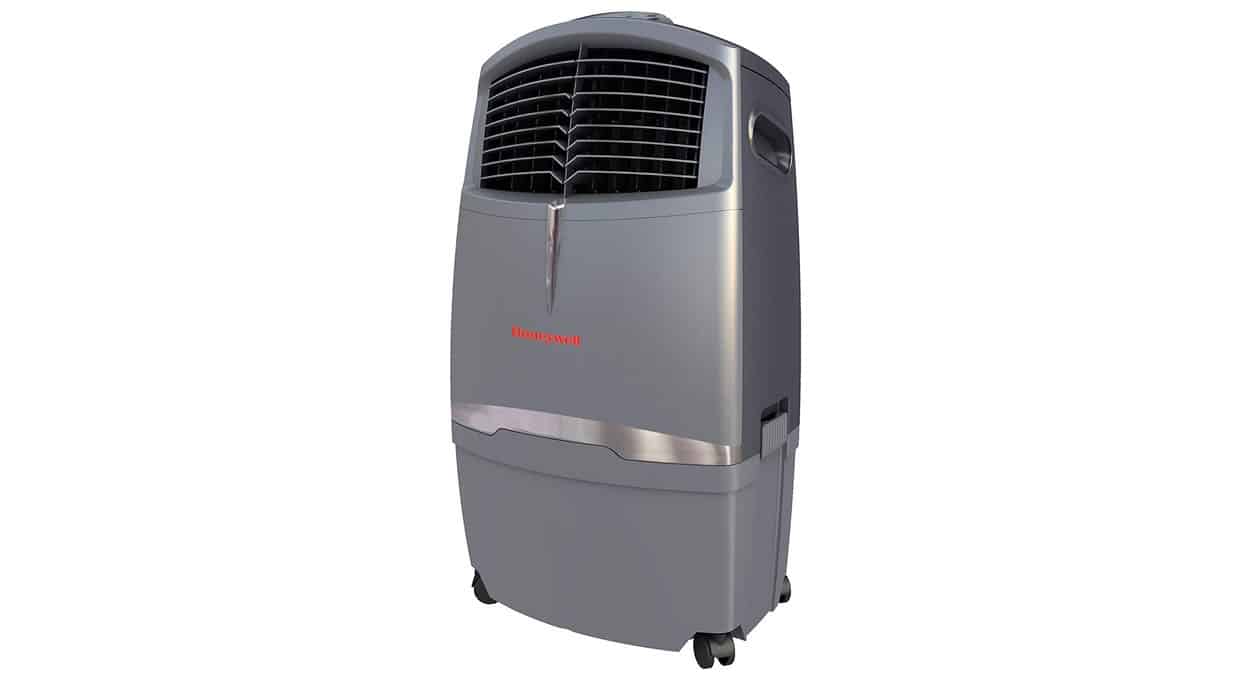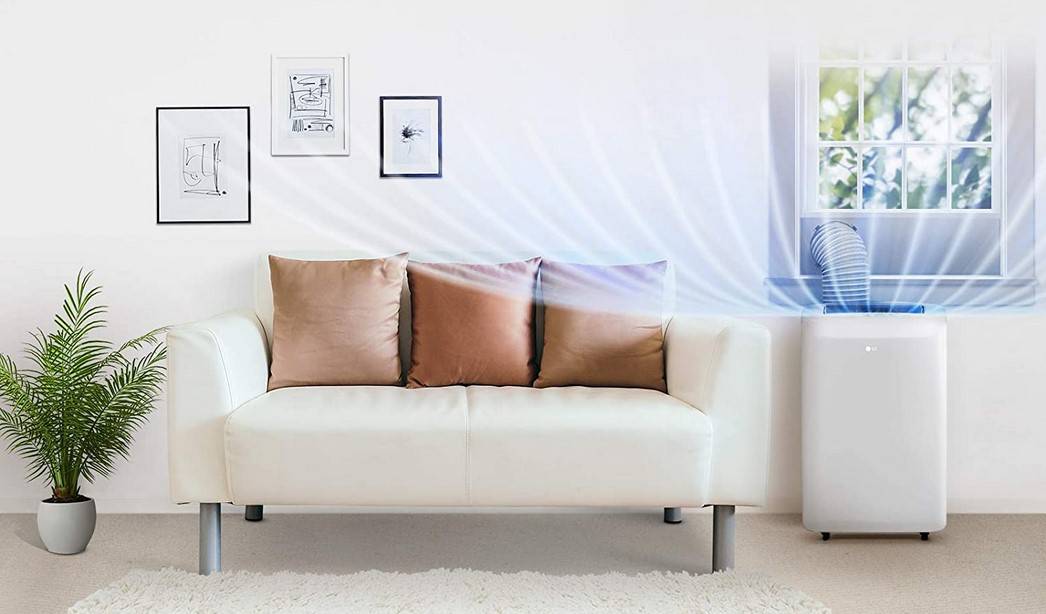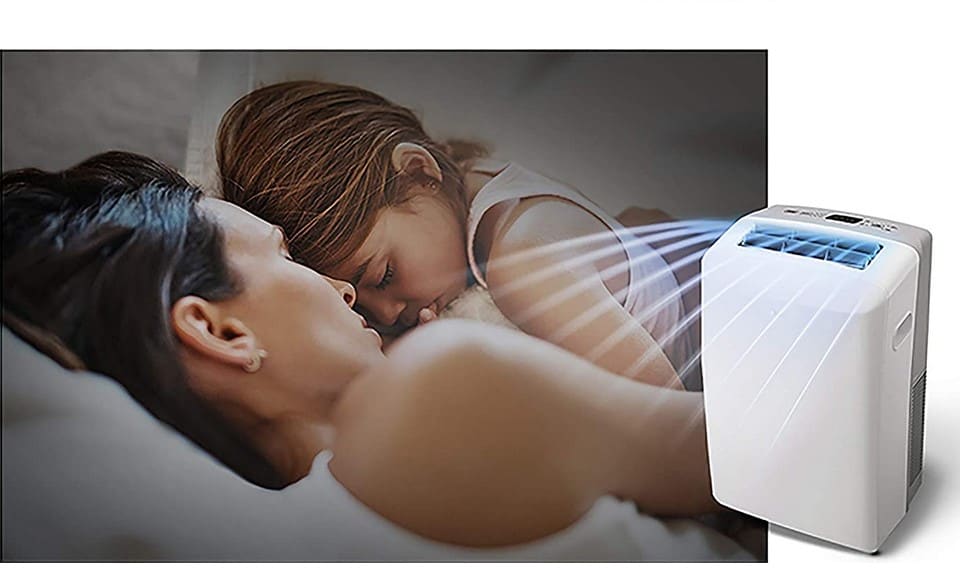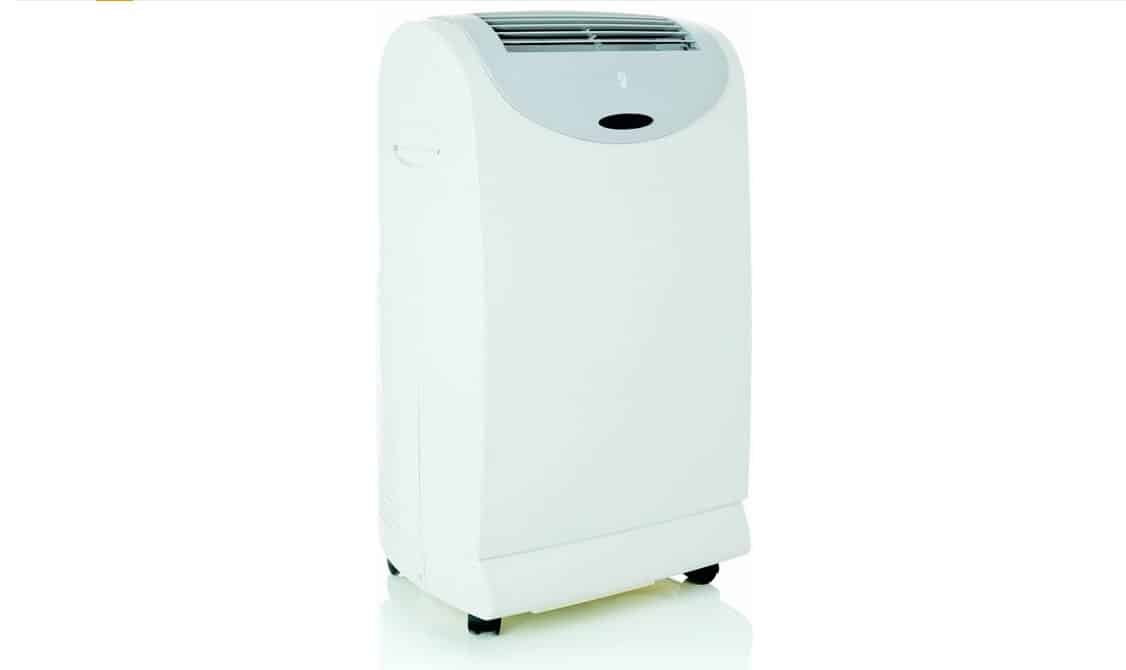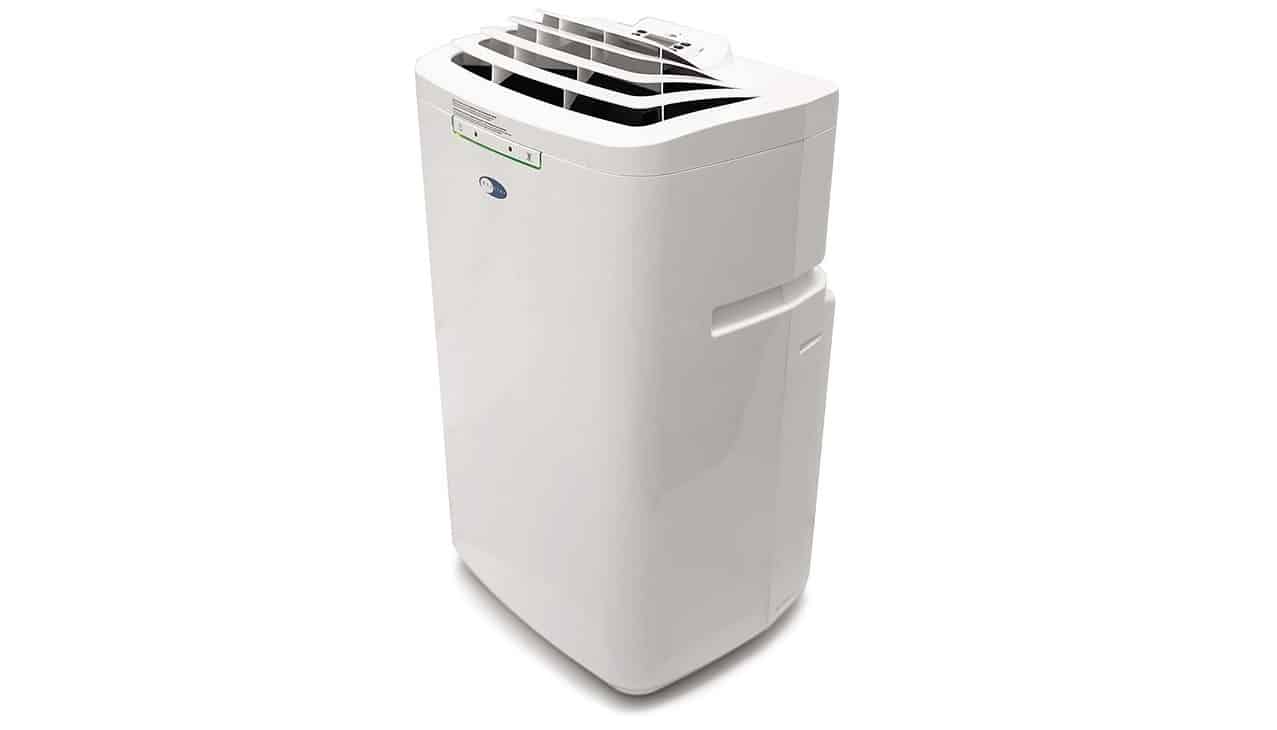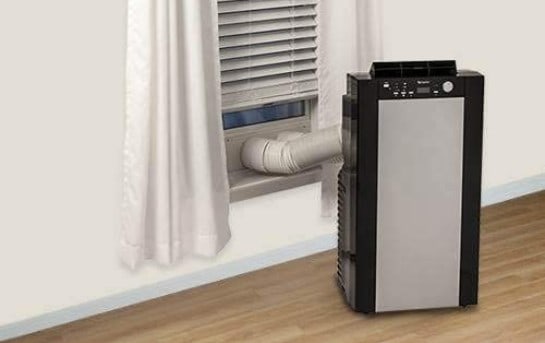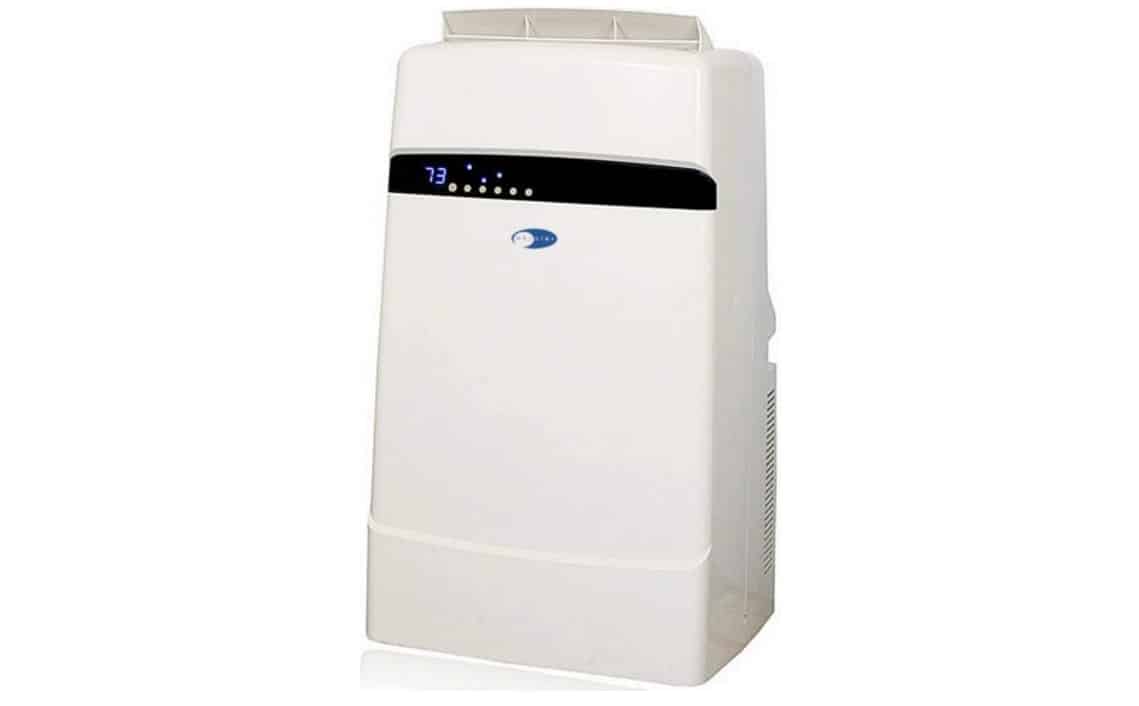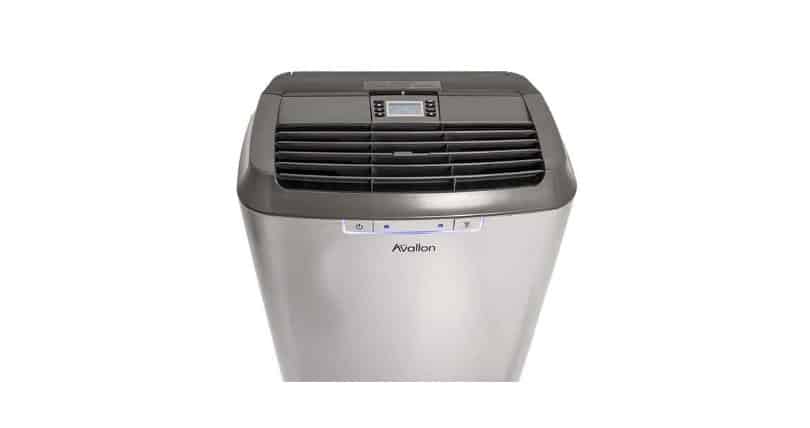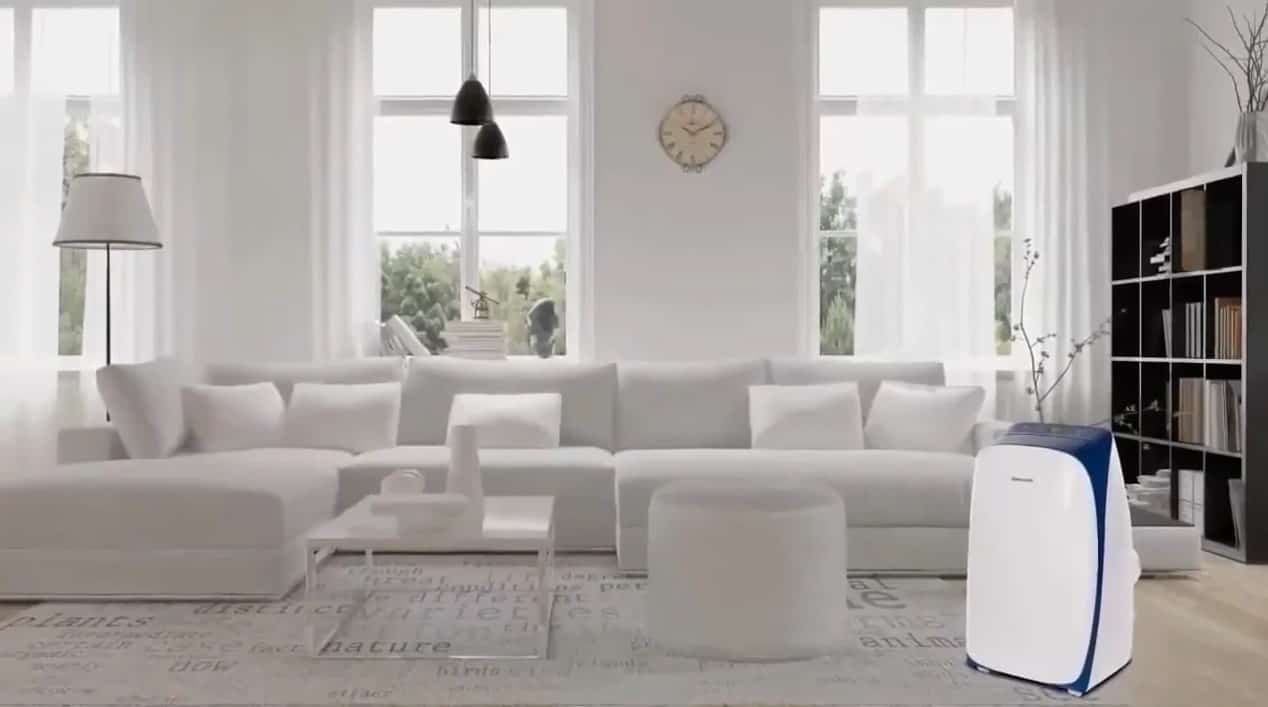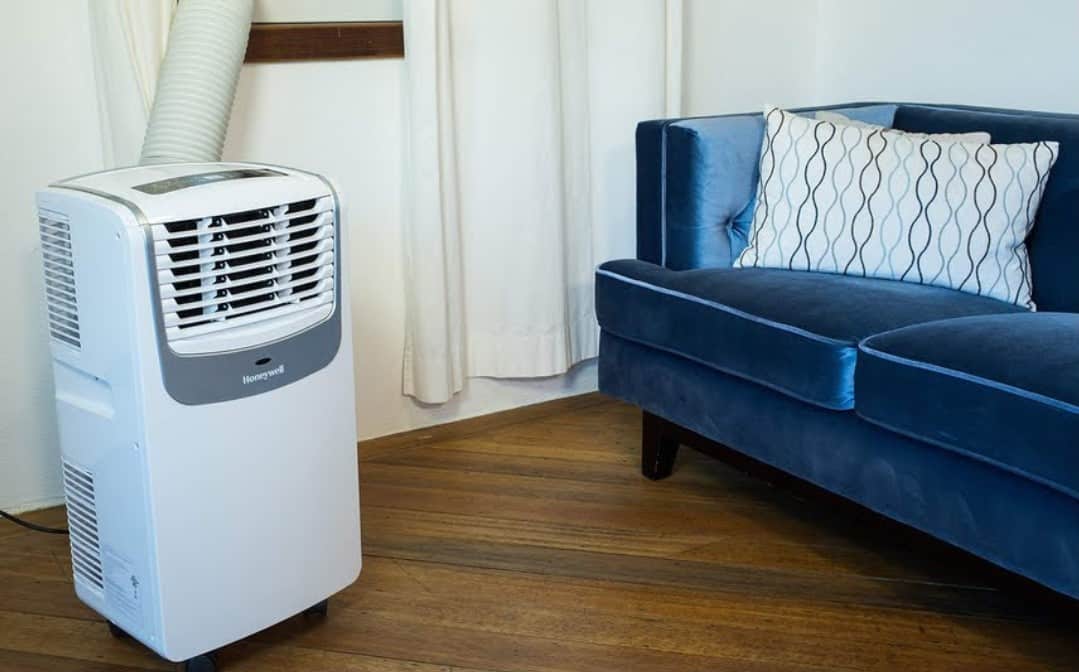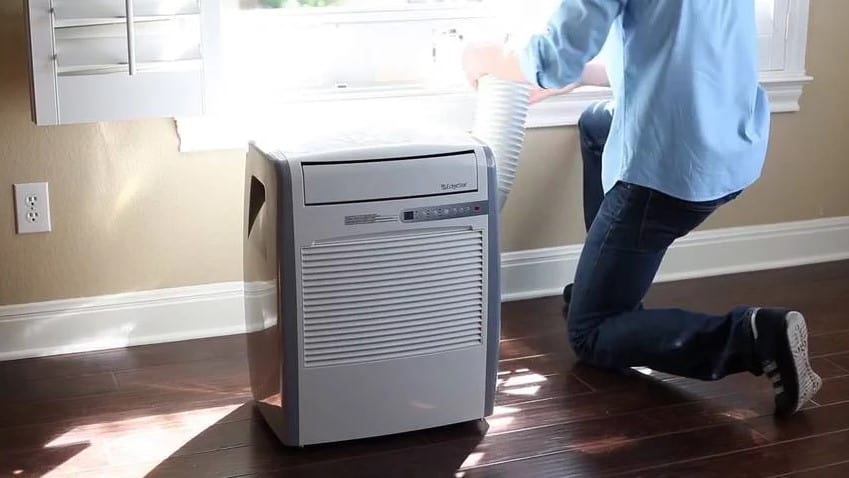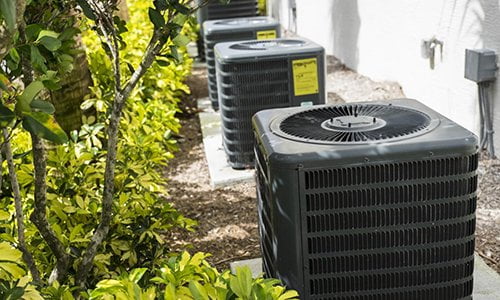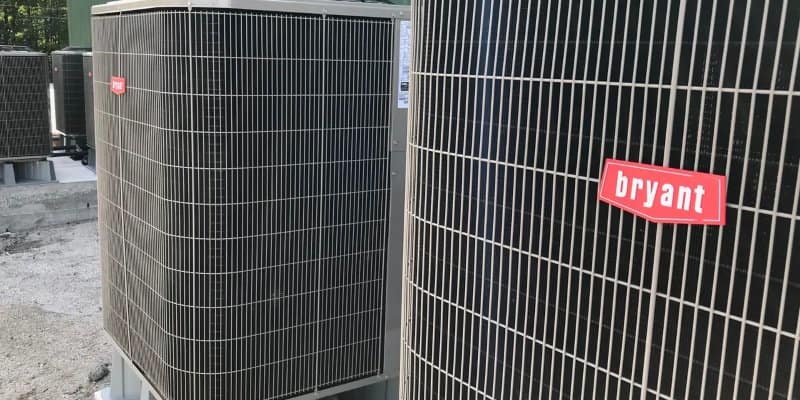If you’re looking for the best air conditioner for your home or office, learning how does a dual-hose air conditioner work and whether they offer enough cooling capacity for your needs is a step in the right direction. While some portable air conditioners struggle to mitigate extreme heat, dual-hose portable AC units provide a quicker cooling process and better energy efficiency.
KEY TAKEAWAYS:
- Dual-hose air conditioners provide an efficient cooling system thanks to efficient heat exchange between indoor and outdoor air.
- The intake hose brings air from outside, passing through the evaporator coil and cooling your home.
- The outtake hose removes hot air from your home and uses it to cool the condenser coil.
To get you started, consider reading our Whynter ARC-143MX Dual-Hose system review for an example of what a dual-hose unit is capable of in terms of cooling capacity and thoughtful features. You can also compare the Toyotomi TAD-T40LW and the Whynter ARC-14SH to see the variations in dual-hose design.
Insider Tip
Dual-hose portable air conditioners can cool a more prominent space faster than single-hose units.
So read on to learn more about how these units operate.
How Do Dual-Hose AC Units Work
While dual-hose models aren’t as efficient as a powerful inverter compressor AC unit, they are fantastic for cooling a large space, such as an office or family room. Dual-hose systems feature a secondary hose to make heat exchange and room cooling more efficient. The intake hose passes air over the evaporator coil, cooling your home, while the outtake hose passes air through the condenser coil and out of your home.
While dual-hose models aren’t as efficient as a powerful inverter compressor AC unit, they are fantastic for cooling a large space, such as an office or family room.
This type of AC can run for a long time, but it usually works pretty fast due to the heat exchange between indoor and outdoor air.
Cooling Capacity
Since dual-hose AC systems feature an exhaust hose and an intake hose, they can better cycle the air in your home. In addition, the dual-hose system almost works like a reverse heat pump, replacing hot air in your home with cool air from the intake hose.
Energy Efficiency
Thanks to the dual-hose heat exchange system, dual-hose can combat summer heat more efficiently than other portable AC models. A dual-hose PAC works similarly to a central air conditioning system due to the consistent air cycle during the cooling process.
Dual-Hose Unit vs Single-Hose Unit
Thanks to the exhaust hose, dual-hose models provide a more efficient air exchange process than a single-hose design. While some single-hose units deliver more substantial cooling power than their dual-hose counterparts, this doesn’t apply in most cases.
Warning
A dual-hose portable unit will have higher operating sound levels than other portable air conditioners, so they aren’t recommended for new parents or light sleepers.
F.A.Q.S
How Many BTUs Do You Need for an Air Conditioner?
Air conditioning engineers recommend about 20 BTU for every square foot of cooling space. For example, a 14,000 BTU dual-hose unit would be ideal for a 700 sq ft room.
What Should I Look for When Buying a Portable Air Conditioner?
Before buying a portable air conditioning unit, know which kind of compressor design you want and the BTU rating to ensure enough cooling power for your home. In addition, you should look for a simple installation process and thoughtful features, like enhanced filtration and dehumidification.
Is It Ok to Leave Portable AC on All Day?
Whether you have a single-hose model or a window unit, you can leave it on all day without risking damage to your home or AC unit. Consider putting the unit in sleep mode while away to save money on energy costs.
STAT: According to a 2015 US Residential Energy Consumption Survey, 26% of Americans have a wall or window air conditioner. (source)

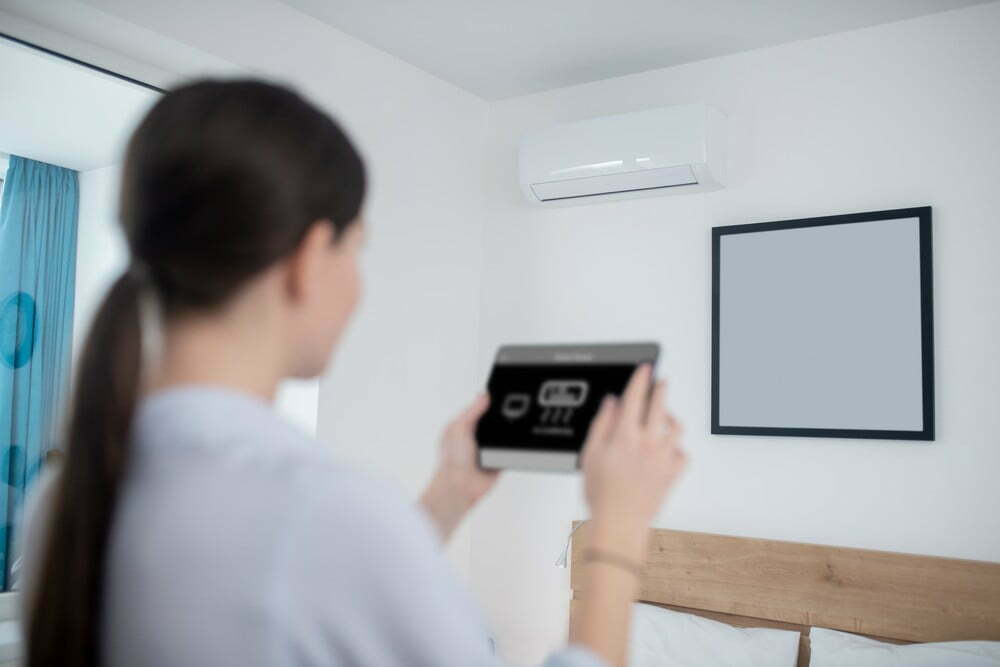













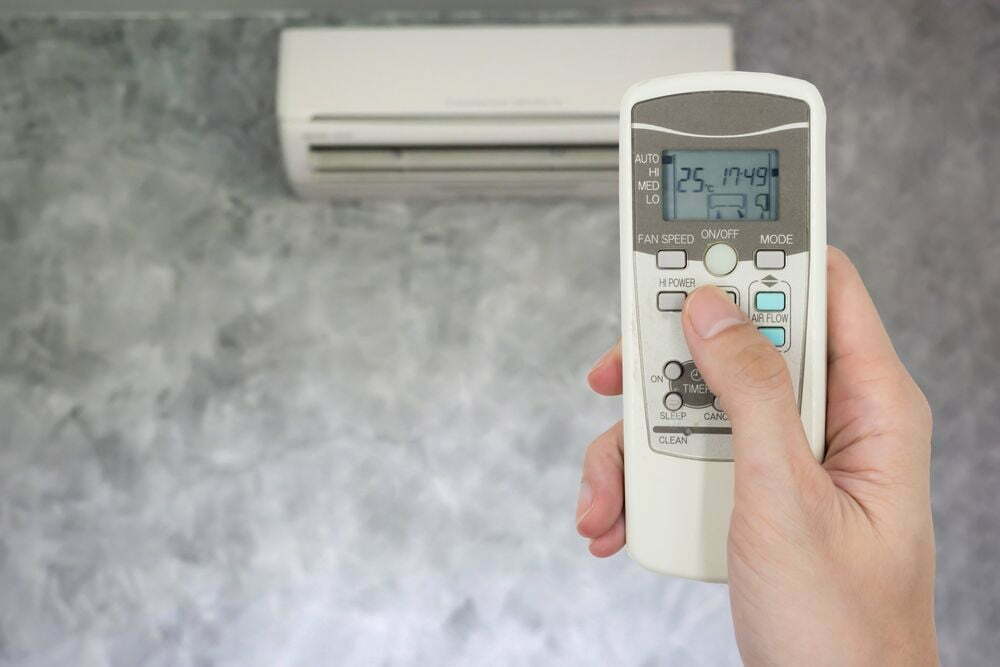
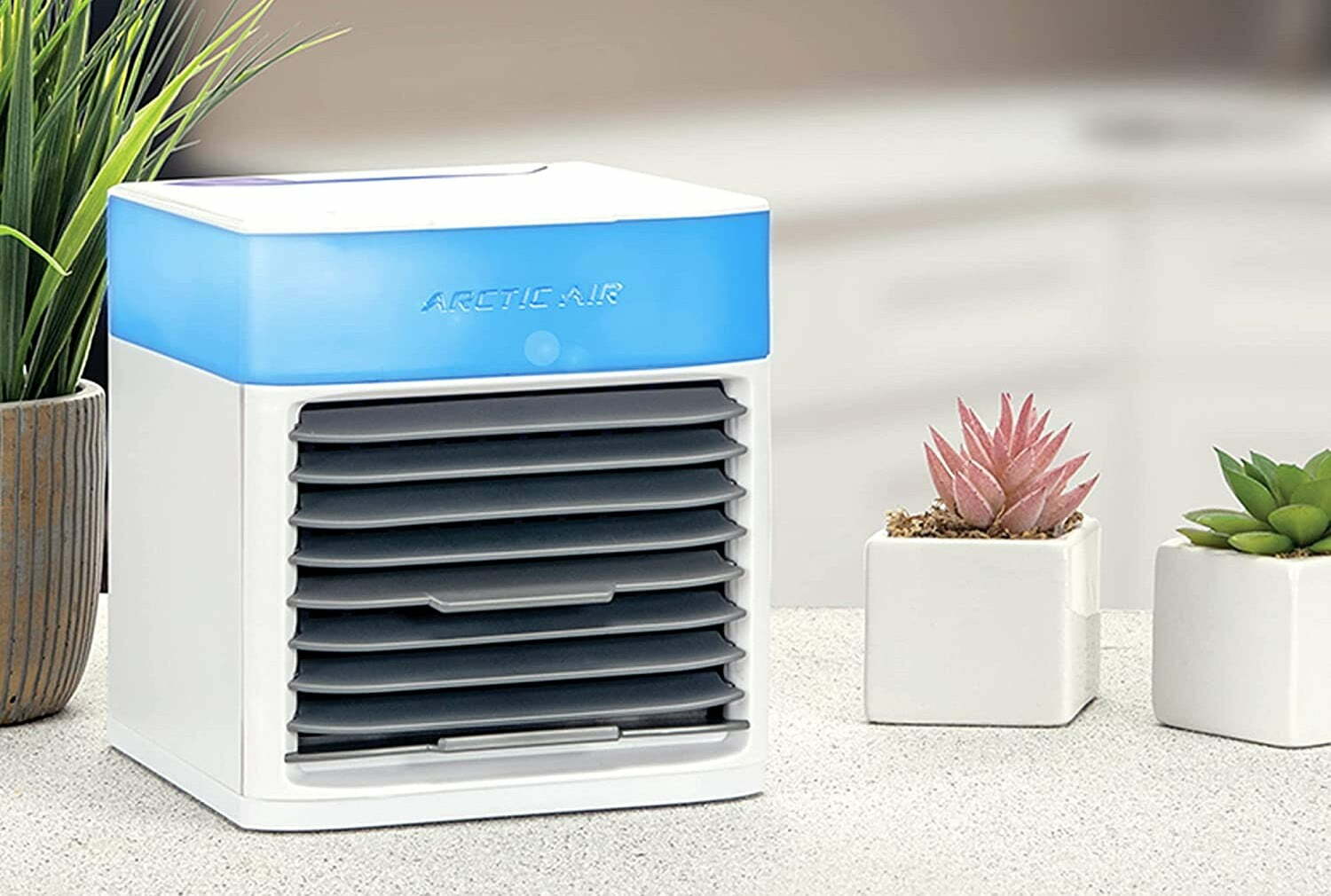
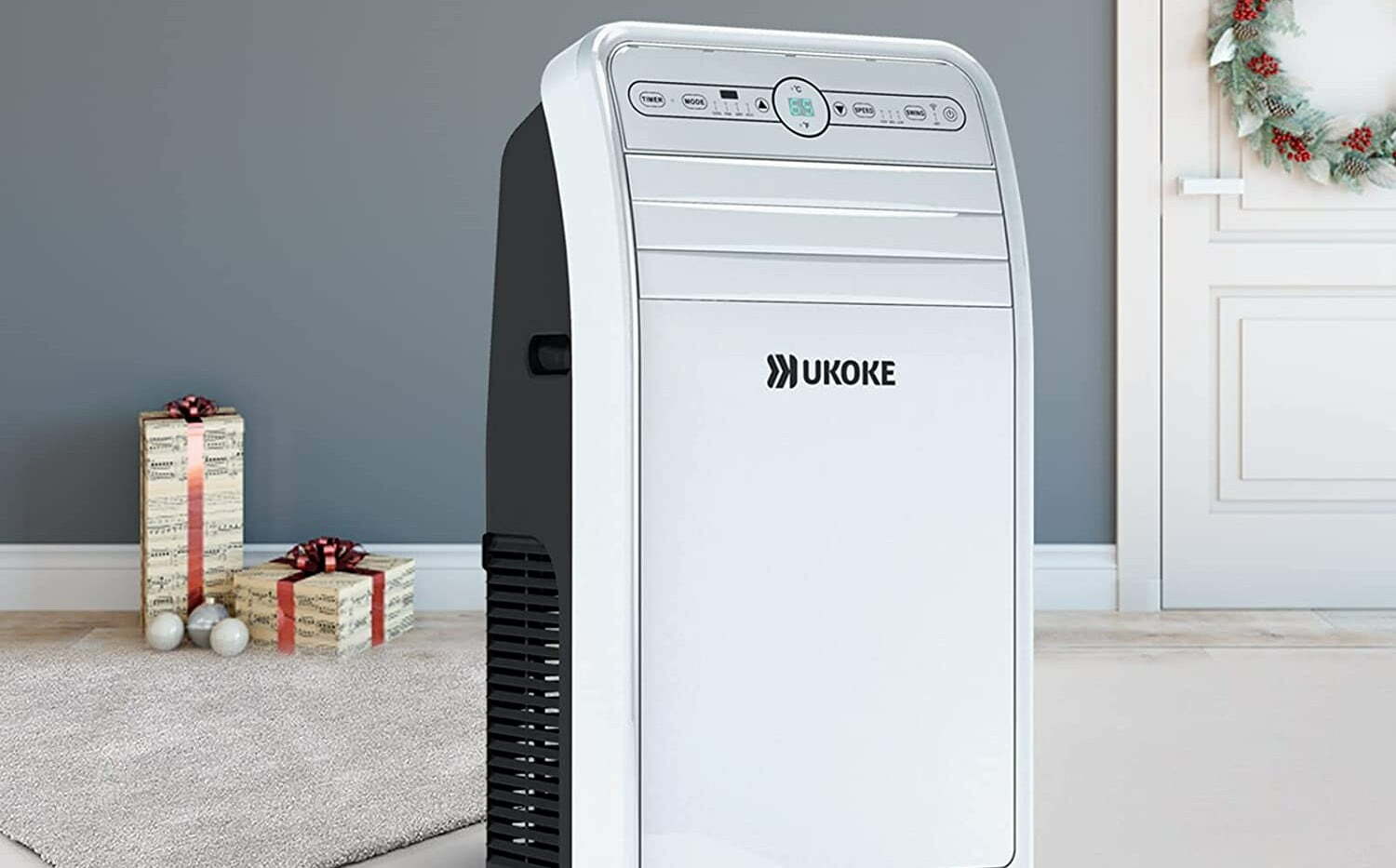
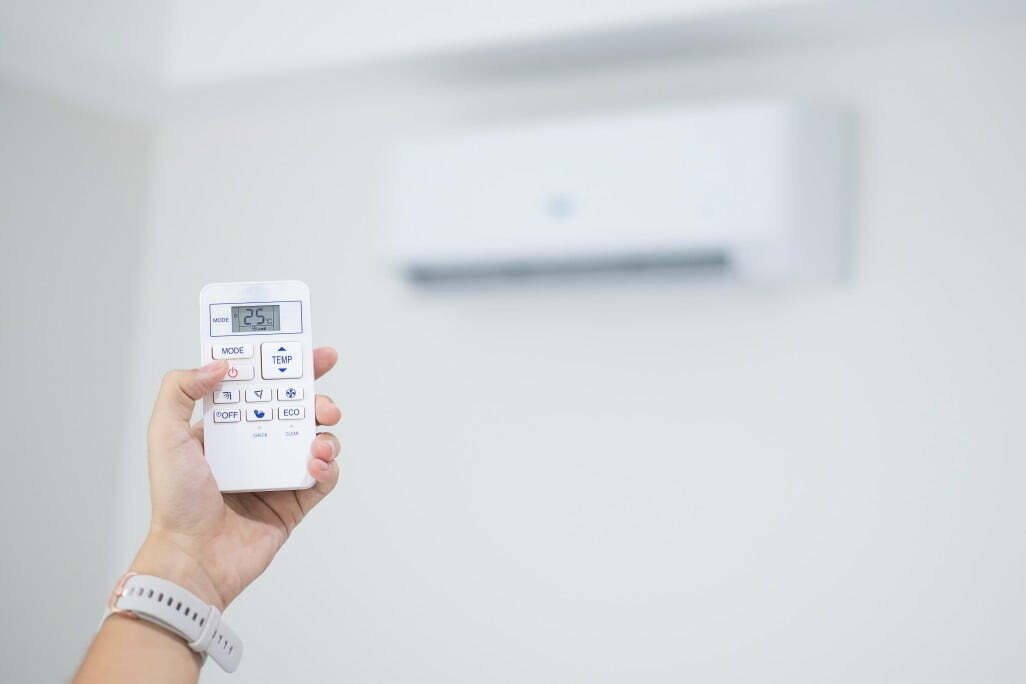
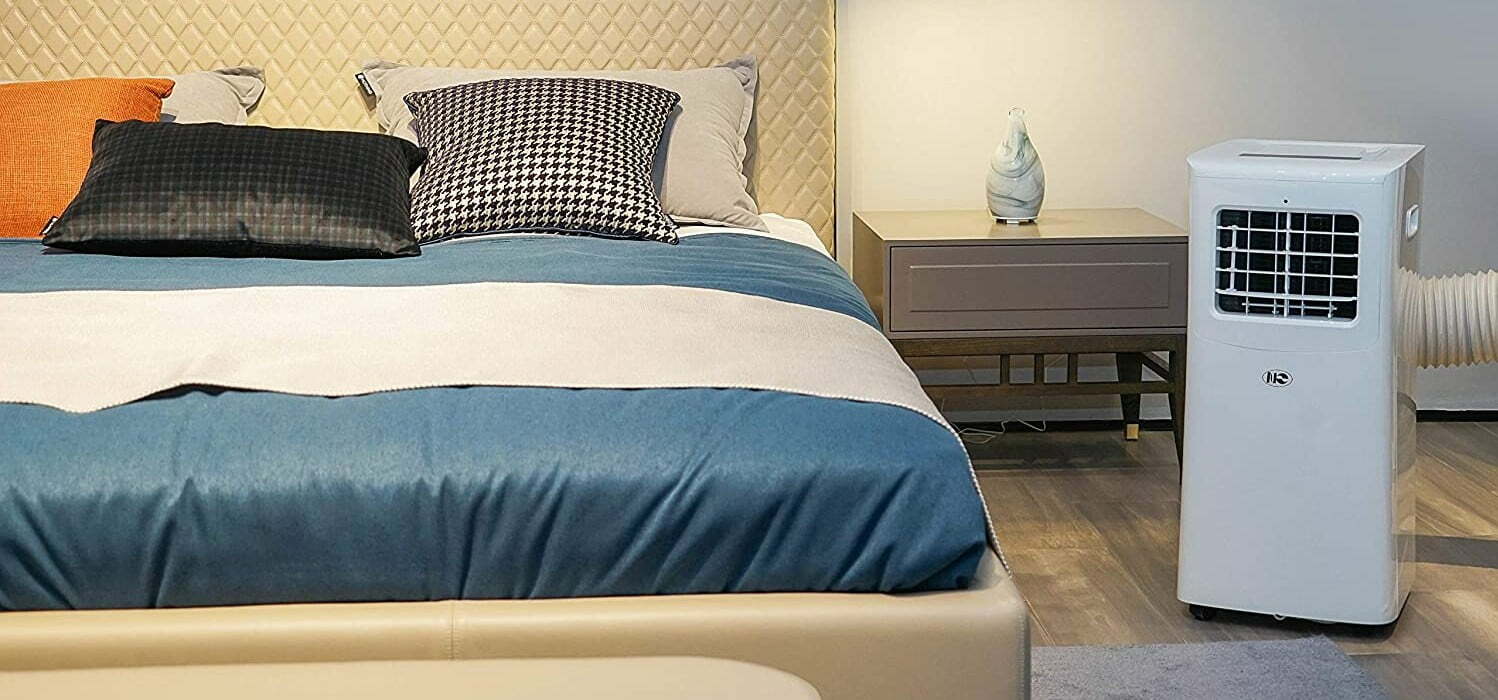
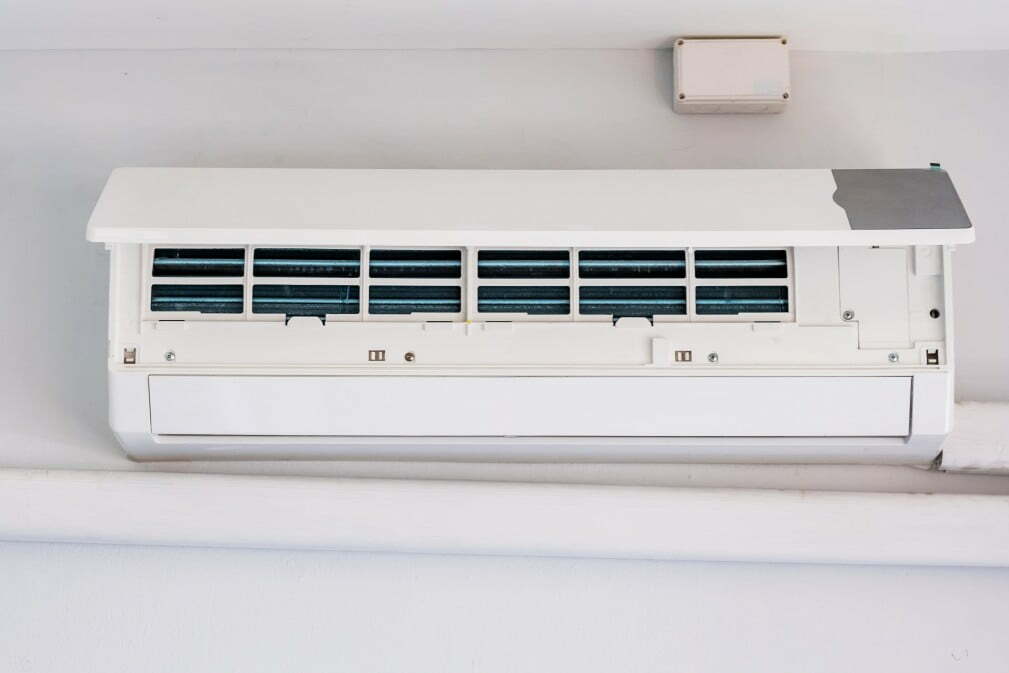
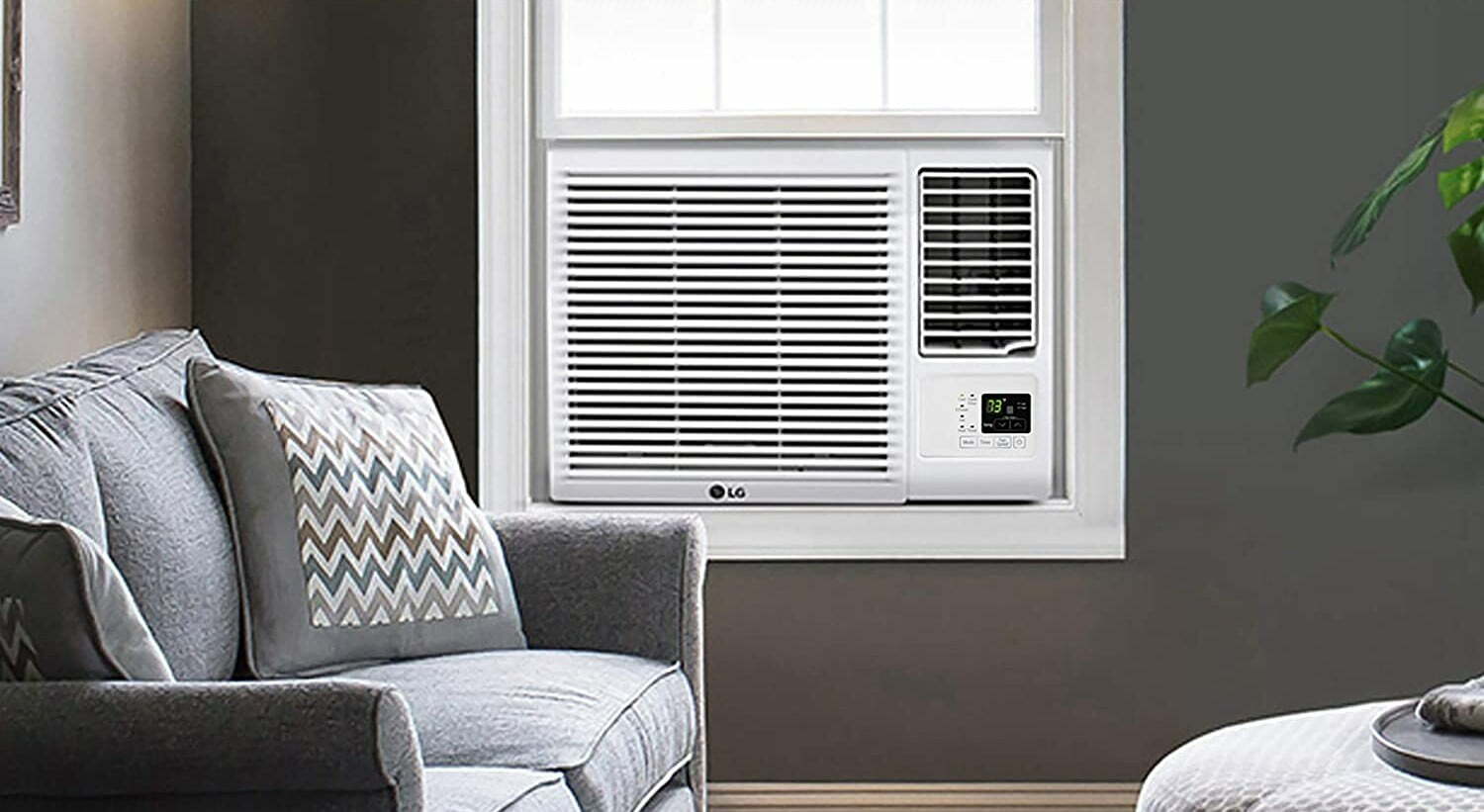
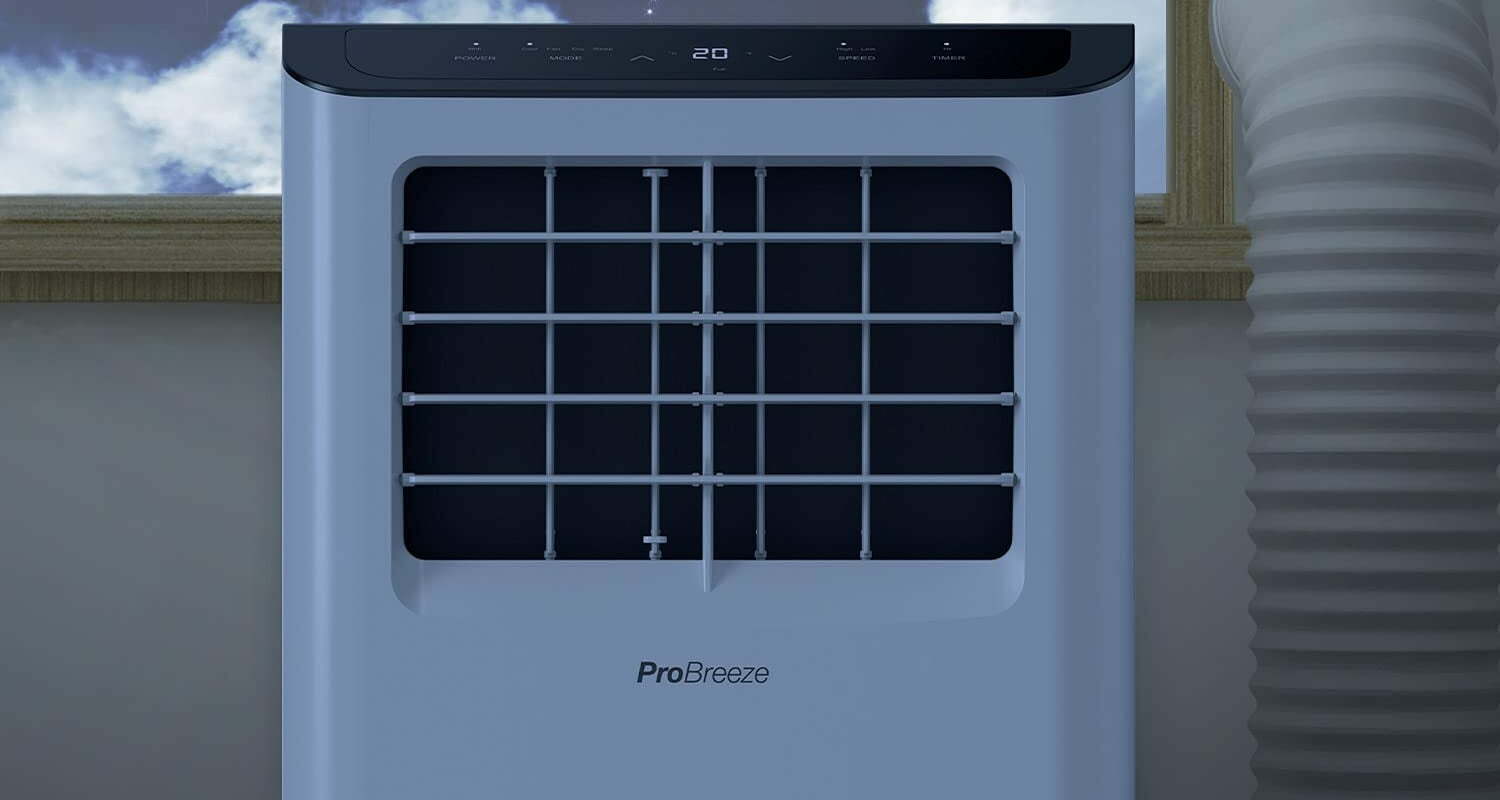

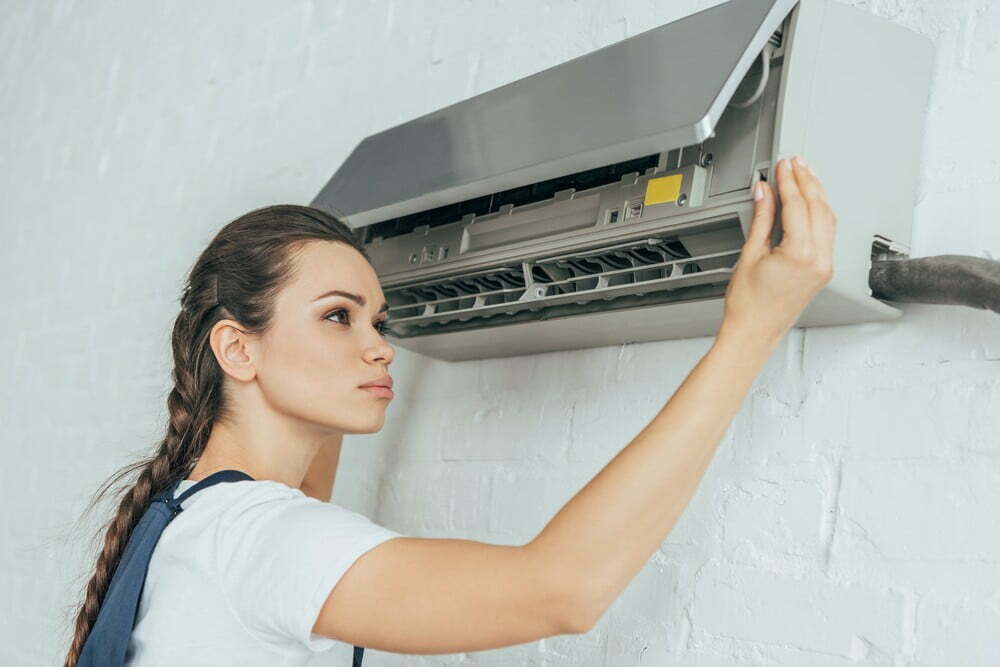
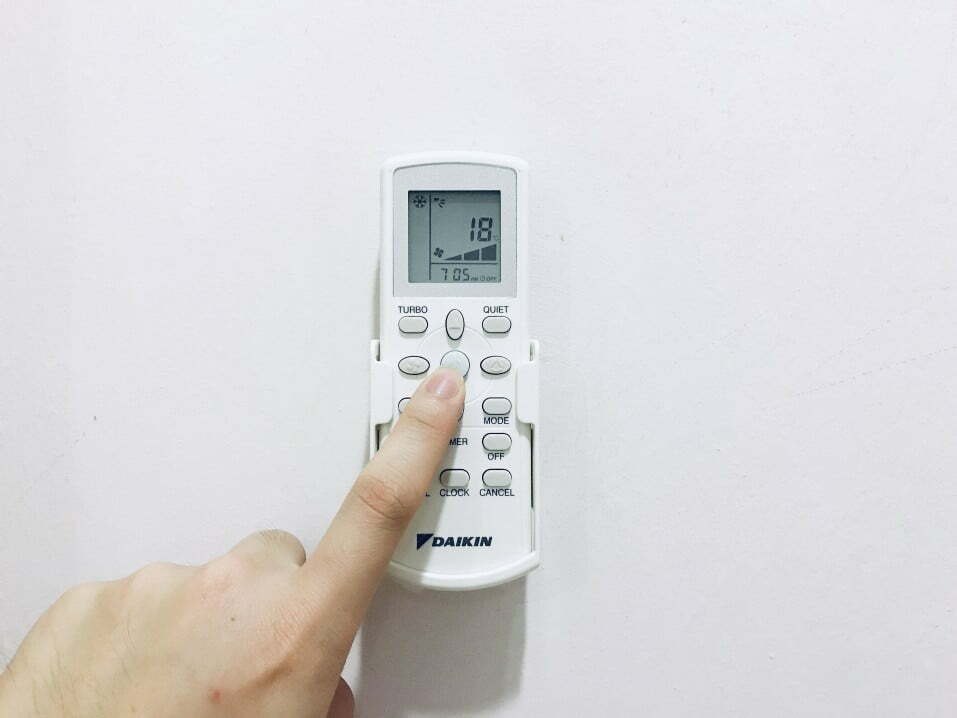
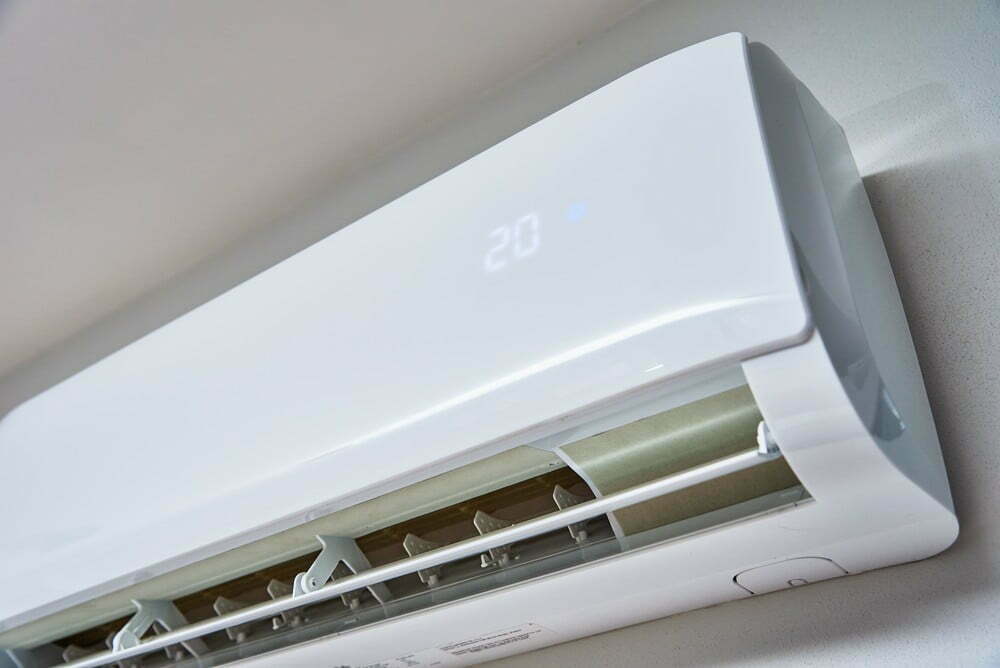
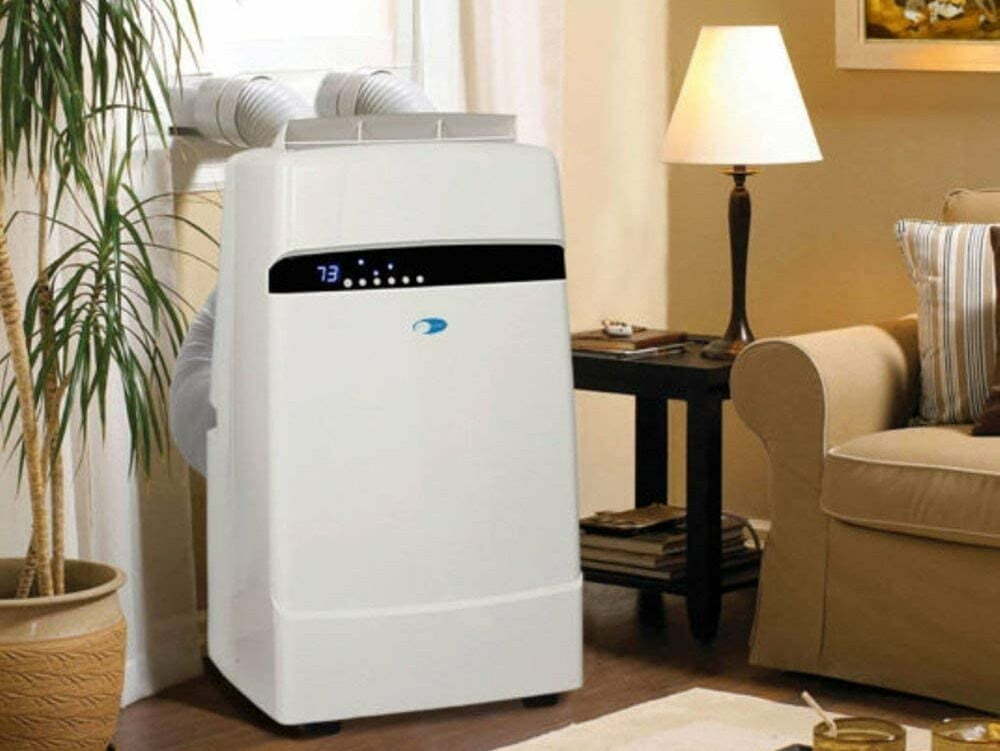
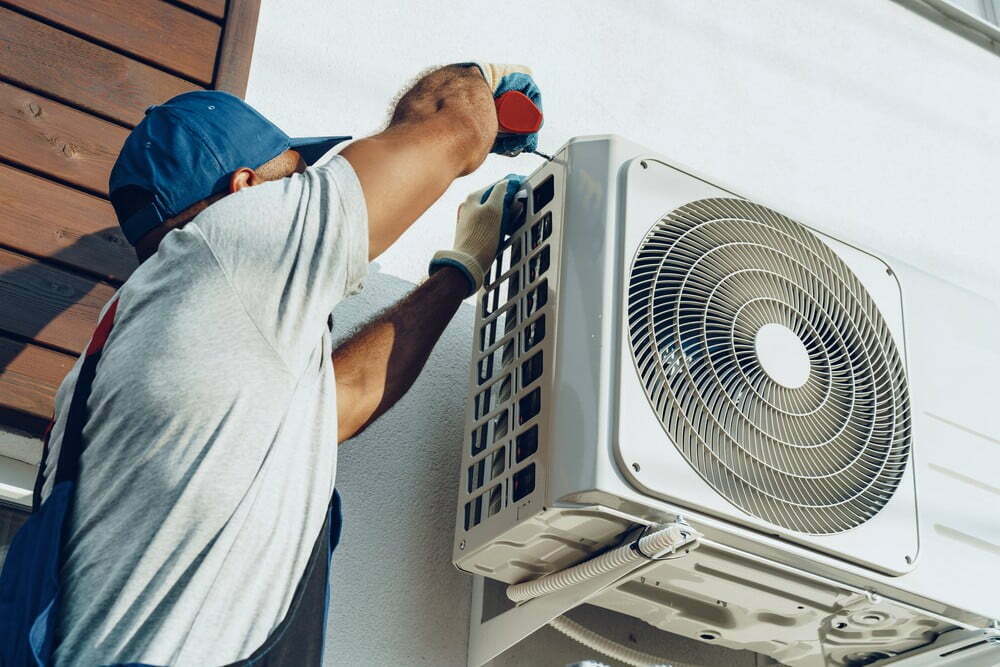
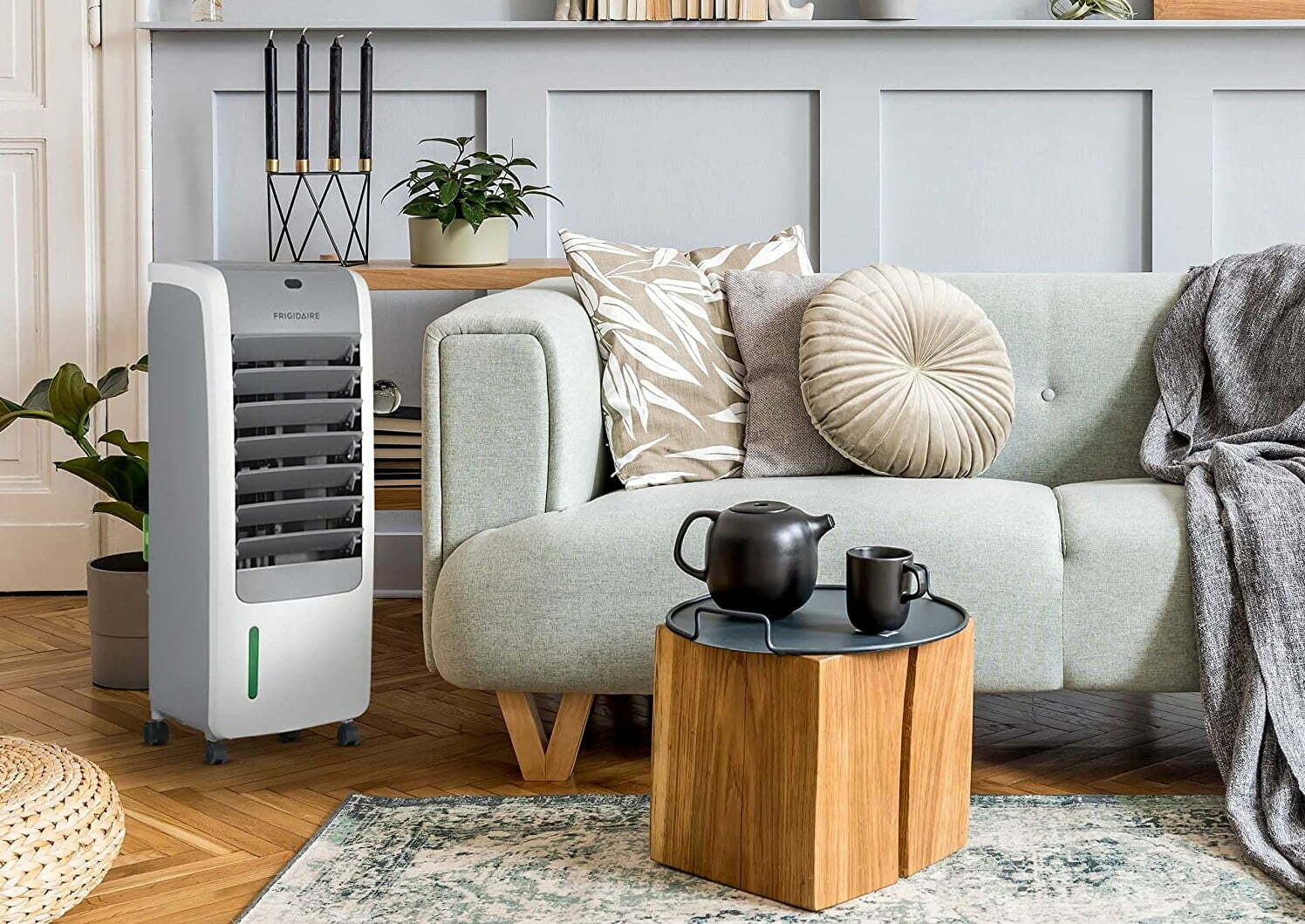
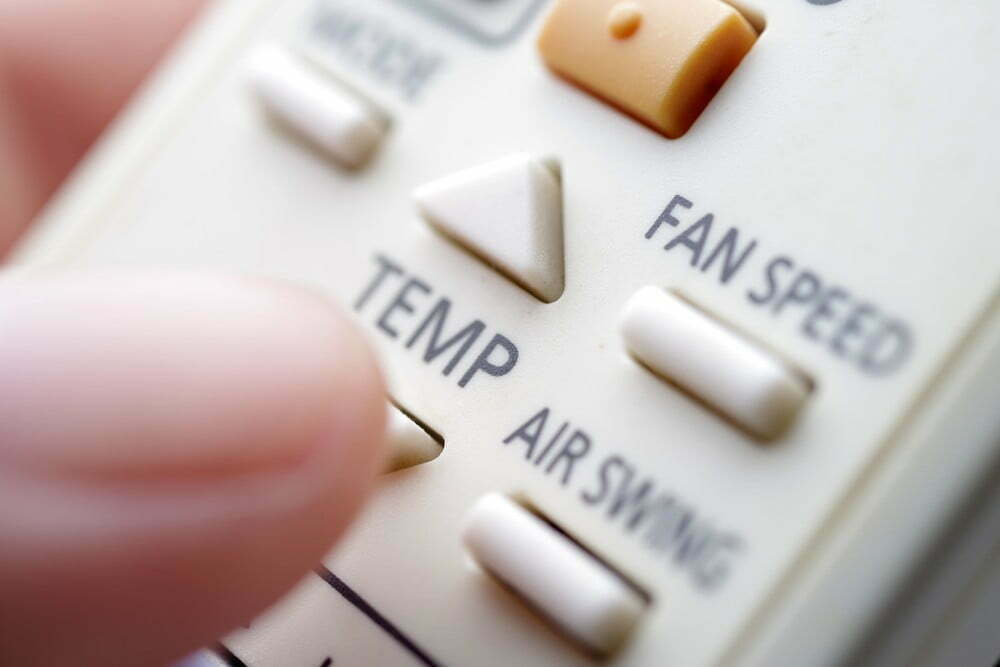
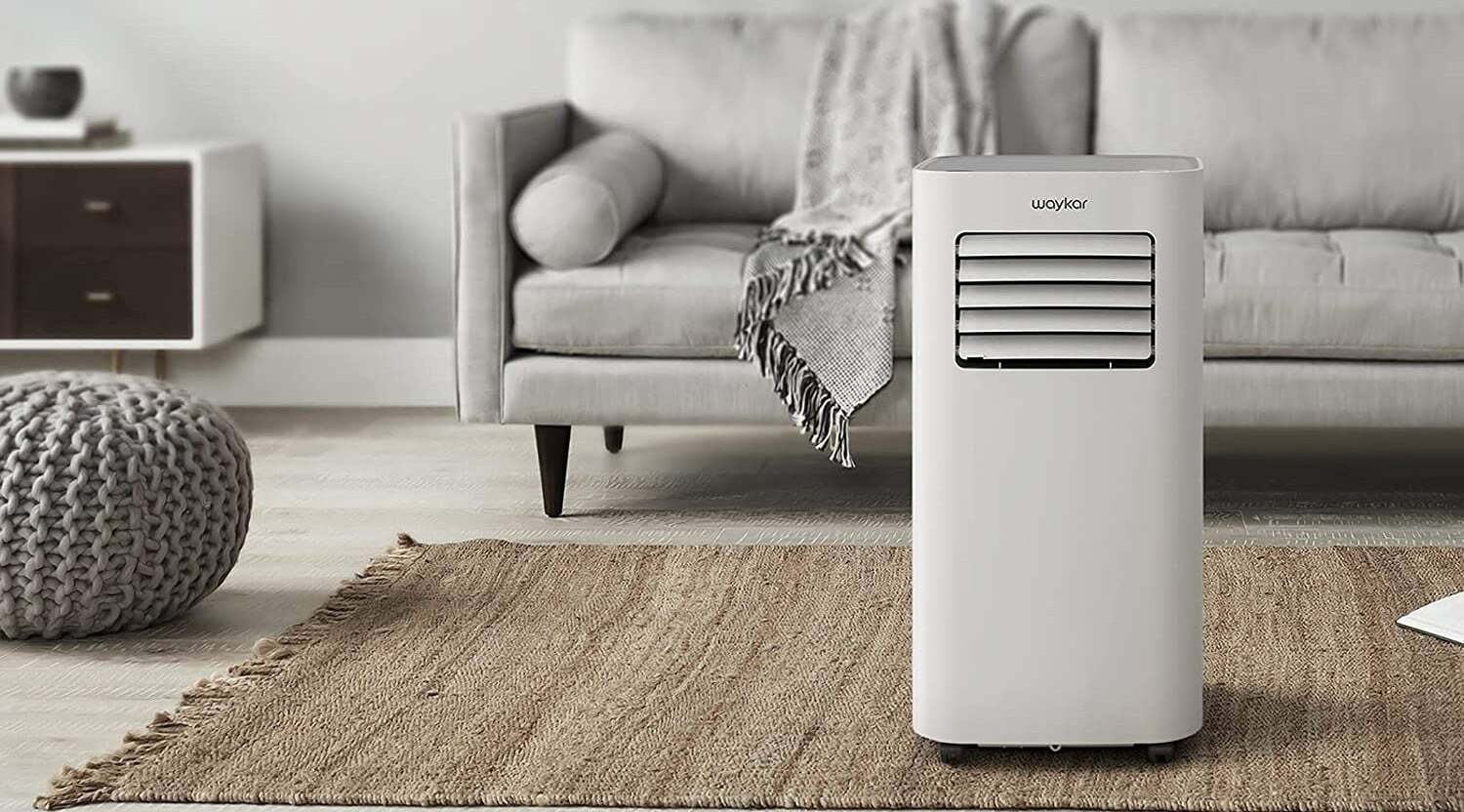
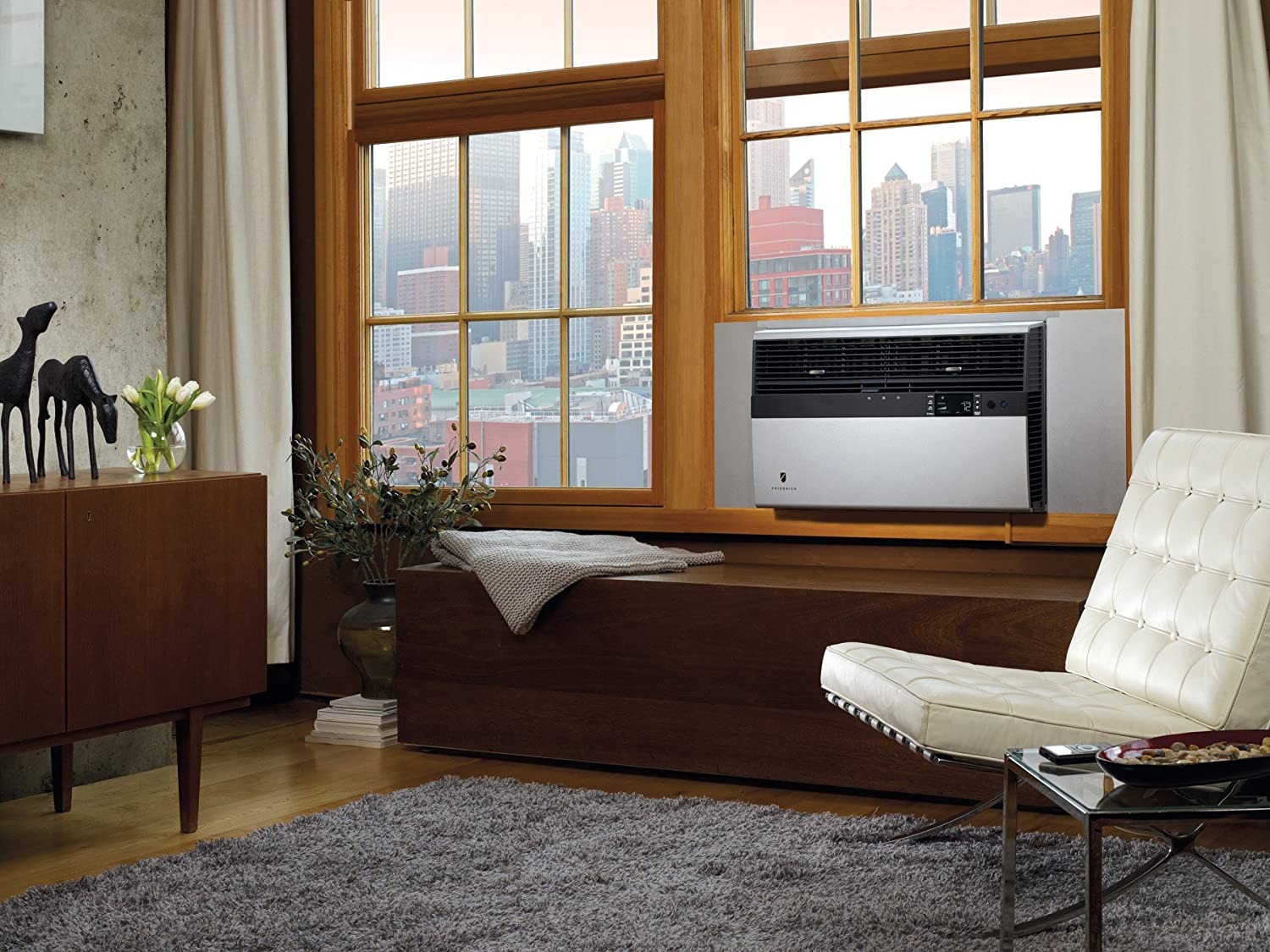
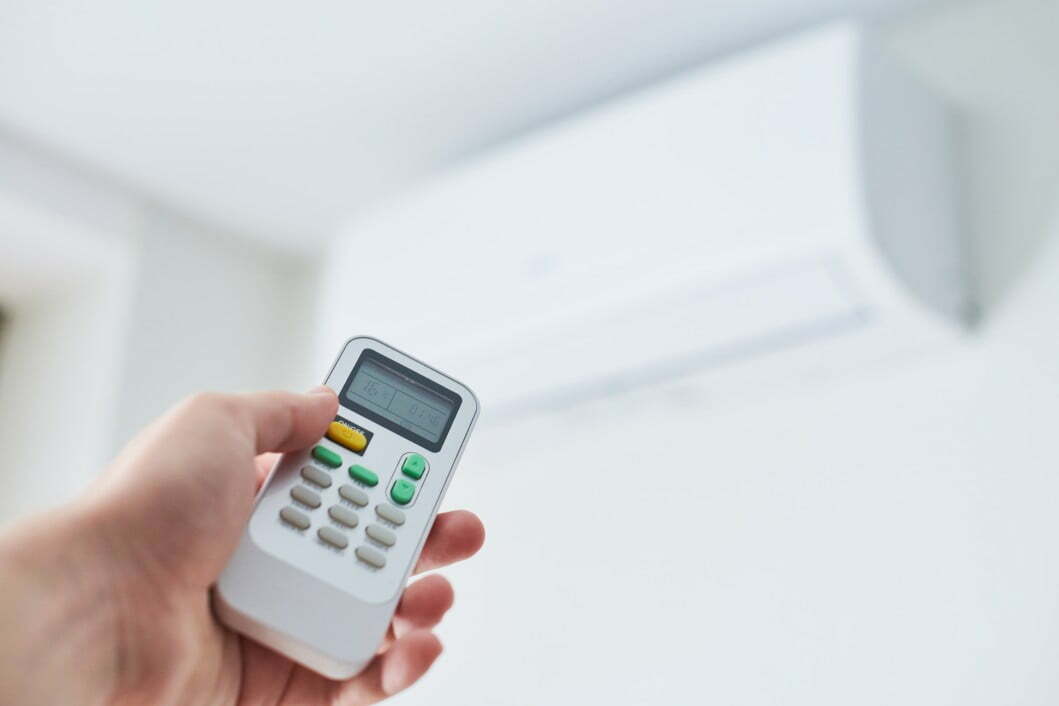
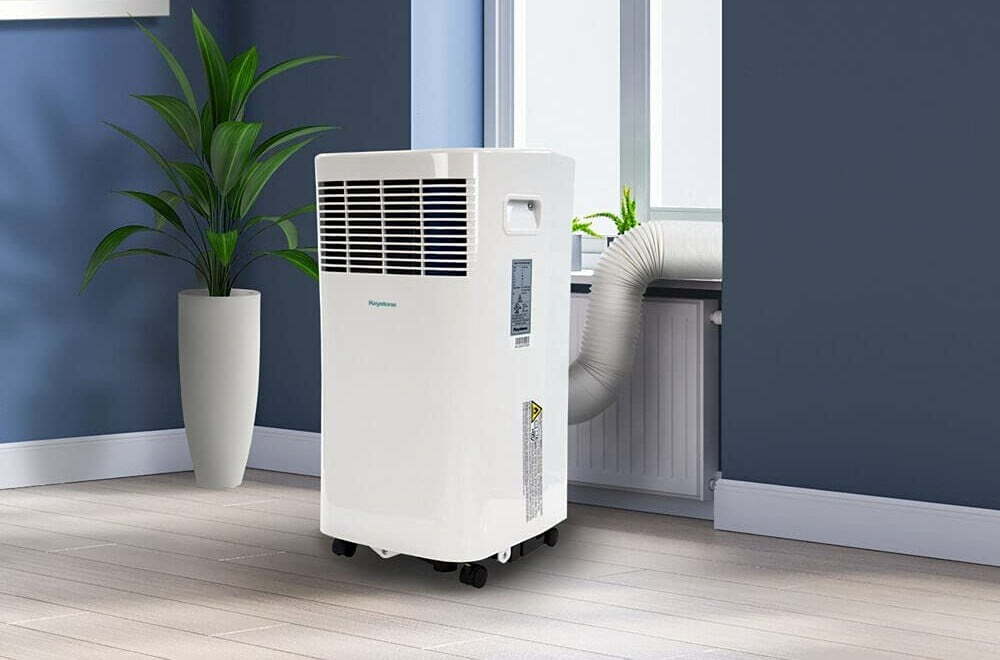
![Best Air Conditioners in [year] ([month] Reviews) 27 Best Air Conditioners in 2026 (January Reviews)](https://www.gadgetreview.dev/wp-content/uploads/best-air-conditioners-image.jpg)
![Quietest Through The Wall Air Conditioners in [year] 28 Quietest Through The Wall Air Conditioners in 2026](https://www.gadgetreview.dev/wp-content/uploads/quietest-through-the-wall-air-conditioner-image.jpg)
![Best 10000 BTU Air Conditioners in [year] 29 Best 10000 BTU Air Conditioners in 2026](https://www.gadgetreview.dev/wp-content/uploads/best-10000-btu-air-conditioner-image.jpg)
![Best 15000 BTU Air Conditioners in [year] 30 Best 15000 BTU Air Conditioners in 2026](https://www.gadgetreview.dev/wp-content/uploads/best-15000-btu-air-conditioner-image.jpg)
![Best 15000 BTU Window Air Conditioners in [year] 31 Best 15000 BTU Window Air Conditioners in 2026](https://www.gadgetreview.dev/wp-content/uploads/best-15000-btu-window-air-conditioner-image.jpg)
![Best 12000 BTU Air Conditioners in [year] 32 Best 12000 BTU Air Conditioners in 2026](https://www.gadgetreview.dev/wp-content/uploads/best-12000-btu-air-conditioner-image.jpg)
![Best Photocatalytic Oxidation Air Purifiers in [year] 33 Best Photocatalytic Oxidation Air Purifiers in 2026](https://www.gadgetreview.dev/wp-content/uploads/best-photocatalytic-oxidation-air-purifier-image.jpg)
![Best Ventless Portable Air Conditioners in [year] 34 Best Ventless Portable Air Conditioners in 2026](https://www.gadgetreview.dev/wp-content/uploads/best-ventless-portable-air-conditioner-image.jpg)
![Best Window Air Conditioners with Heat in [year] 35 Best Window Air Conditioners with Heat in 2026](https://www.gadgetreview.dev/wp-content/uploads/best-window-air-conditioner-with-heat-image.jpg)
![Best Inverter Air Conditioners in [year] 36 Best Inverter Air Conditioners in 2026](https://www.gadgetreview.dev/wp-content/uploads/best-inverter-ac-image.jpg)
![Best HEPA Air Purifiers in [year] 37 Best HEPA Air Purifiers in 2026](https://www.gadgetreview.dev/wp-content/uploads/best-hepa-air-purifier-image.jpg)
![Best Quiet Window Air Conditioners in [year] 38 Best Quiet Window Air Conditioners in 2026](https://www.gadgetreview.dev/wp-content/uploads/quiet-window-air-conditioner-image.jpg)
![Best Energy Efficient Window Air Conditioners in [year] 39 Best Energy Efficient Window Air Conditioners in 2026](https://www.gadgetreview.dev/wp-content/uploads/best-energy-efficient-window-air-conditioner-image.jpg)
![Best Quiet Portable Air Conditioners in [year] 40 Best Quiet Portable Air Conditioners in 2026](https://www.gadgetreview.dev/wp-content/uploads/quiet-portable-air-conditioner-image.jpg)
![Best 6000 BTU Air Conditioners in [year] 41 Best 6000 BTU Air Conditioners in 2026](https://www.gadgetreview.dev/wp-content/uploads/best-6000-btu-air-conditioner-image.jpg)
![Best 8000 BTU Air Conditioners in [year] 42 Best 8000 BTU Air Conditioners in 2026](https://www.gadgetreview.dev/wp-content/uploads/best-8000-btu-air-conditioner-image.jpg)
![Best Small Window Air Conditioner in [year] 43 Best Small Window Air Conditioner in 2026](https://www.gadgetreview.dev/wp-content/uploads/best-small-window-air-conditioner-image.jpg)
![Best 5000 BTU Air Conditioners in [year] 44 Best 5000 BTU Air Conditioners in 2026](https://www.gadgetreview.dev/wp-content/uploads/best-5000-btu-air-conditioner.jpg)
![Best Mini Split in [year] 45 Best Mini Split in 2026](https://www.gadgetreview.dev/wp-content/uploads/best-ductless-mini-split-air-conditioner-image.jpg)
![10 Best Portable Air Conditioners and Heaters in [year] 46 10 Best Portable Air Conditioners and Heaters in 2026](https://www.gadgetreview.dev/wp-content/uploads/best-portable-air-conditioner-and-heater-image.jpg)
